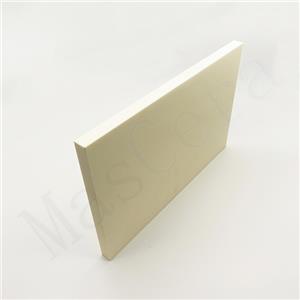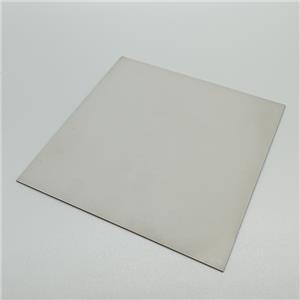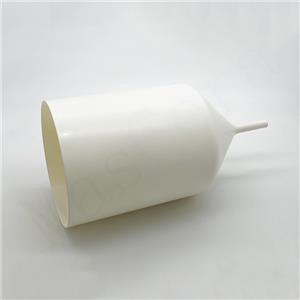Introduction to Zirconia Toughened Alumina (ZTA) Ceramics
Since Garvie et al. published "Ceramic Steel" in the journal Nature in 1975, research on phase transformation ceramic toughening related to zirconia has been receiving significant attention. Since then, experiments involving the dispersion of zirconia in various ceramic matrices have been conducted, resulting in the production of high-performance ceramic materials. One of the most classic examples is the introduction of zirconia into alumina ceramics, resulting in Zirconia Toughened Alumina (ZTA) ceramics.
1、 Characteristics of ZTA and its correlation with the properties of alumina powder:
ZTA ceramics are composite ceramics with excellent chemical stability, thermal stability, and high strength. However, their reliability is low, and production costs are high, limiting their applications.
The flexural strength and fracture toughness of ZTA ceramics are related to the particle size of the alumina powder used, with sintering properties improving as the particle size of the alumina used decreases. Experimental evidence suggests that ZTA prepared using submicron-sized alumina produced by mechanical grinding exhibits good mechanical properties when sintered at 1500°C, with a flexural strength of 720 MPa and fracture toughness of 6.86 MPa·m1/2, outperforming chemically prepared alumina-based ZTA ceramics. However, finer particles do not necessarily result in better mechanical properties of ZTA, as this also depends on the sintering temperature. Large alumina grain sizes at the same sintering temperature can inhibit zirconia phase transformation, thereby affecting the final properties of ZTA ceramics.
2、 Preparation methods of ZTA composite powders:
The preparation techniques for ZTA composite powders include mixing methods, precipitation methods, and precipitation encapsulation methods. However, issues such as aggregation of ultrafine powders and uneven dispersion of ZrO2 in the matrix have always been challenging in process control. In recent years, researchers have made many improvements to existing methods.
(1)Mechanical mixing method:This involves mixing and ball milling the powders composing the composite, followed by sintering. While this method is direct and simple, it cannot guarantee uniform dispersion of multiphase components. Experiments have shown that ceramics prepared using this method may exhibit higher porosity due to uneven mixing, leading to decreased mechanical properties.
(2)Multiphase suspension mixing method:This method involves adjusting the pH and adding dispersants to prepare stable single-phase suspensions of each component, then finding suitable mixing conditions where particles of each phase are uniformly dispersed, and finally mixing the single-phase suspensions. Uniformly mixed powders can be prepared by finding common flocculation conditions.
(3)Sol-suspension mixing method:Due to the unaffected suspension of nanosols by liquid pH, it is convenient to mix them uniformly with other suspensions. When both liquids have a high solid phase content, stirring heating or airflow drying can be used to obtain a highly mixed nanocomposite ceramic.
(4)Sol-gel method: This method involves converting sols of metal oxides or hydroxides into gels, followed by drying and calcination to prepare oxide powders. This method is suitable for preparing uniformly mixed nanopowders.
3、Application directions:
ZTA ceramics, a high-strength and high-toughness composite material formed by the combination of alumina's high hardness and zirconia's excellent toughness, can be used in various applications:
(1)Production of ceramic knives for processing cast iron and alloys.
(2)Fabrication of interface structures in engineering ceramics to extend the service life of engineering materials.
(3)Production of wear-resistant ceramic balls.
(4)Utilization in biomedical materials due to the excellent biocompatibility of alumina ceramics, for reconstructive and reparative purposes in hard tissues such as teeth.
XIAMEN MASCERA TECHNOLOGY CO., LTD. is a reputable and reliable supplier specializing in manufacturing and sales of technical ceramic parts. We provide custom production and high precision machining for a wide series of high performance ceramic materials including alumina ceramic, zirconia ceramic, silicon nitride, silicon carbide, boron nitride, aluminum nitride and machinable glass ceramic. Currently, our ceramic parts can be found in many industries like mechanical, chemical, medical, semiconductor, vehicle, electronic, metallurgy etc. Our mission is to provide the best quality ceramic parts for global users and it is a big pleasure to see our ceramic parts work efficiently in customers' specific applications. We can cooperate on both prototype and mass production, welcome to contact us if you have demands.





